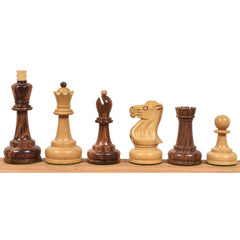The original precursor to Chess, Chaturanga, began to spread beyond the sub-continent around the 6th century CE, evolving into Xiangqi in China, Makruk in Thailand, and Shatranj in Persia – each with its own unique set of rules.
Chess Comes to Europe
After conquering Persia, the Arabs took to the game of Shatranj with great enthusiasm. Their traders carried the game to Russia in the 10th Century, while the Arab Umayyads took the game to Western Europe soon after, following their conquest of Hispania (modern-day Spain and Portugal).
But eventually, it was Chess that proved more effective at ‘conquering’ the hearts and minds of the Europeans. By the 11th century, Chess had become immensely popular among the aristocracy and clergy across much of Europe.
The romantic and theoretical eras
During the romantic era of Chess – from the 12th to the 15th Century, the game was associated with high culture and inspired masterpieces of medieval European art, sculpture, and literature.
The period between the 16th and 18th centuries is known as the theoretical era of Chess. Rules were modified. Major pieces – Queen, Bishop, and Rook were made more powerful and versatile.
Chess became more strategic. Theoretical treatises were written on various openings, mid-games, and end games. The game as we know it today took shape – and Europe came to be seen as the birthplace of modern Chess.
Chess-inspired art continued to flourish, and a wide variety of stylized Chess sets, distinctive to the regions of their origin were designed – a tradition that started during the romantic era and continues till this day.
European Chess Sets
Here, we take you through some of the most uniquely designed, aesthetically pleasing, and lovingly crafted Chess sets, from some of the leading European Chess-playing nations.
RUSSIAN CHESS SETS
Considered, one of the leading chess-playing nations of the world, Russia has churned out more Grandmasters and World Champions than any other nation in the world – by a huge margin.
The nation boasts of a glorious, thousand-year-long tradition in Chess. Naturally, the game has inspired generations of craftsmen to create Chess sets that reflect its unique sense of design, sculpture, and architecture.
GERMAN CHESS SETS
With a long chess-playing nation, the German Chess Championship which crowns the national champion has been conducted since 1861. Germany also holds hundreds of local, national, and international tournaments every year.
The village of Strobeck established itself as the ‘Little Chess Village’ of Europe since 1011. Chess pervades all aspects of village life. Chess boards are set up on every street corner. The village hosts an annual Chess festival – where life-sized Chess matches featuring real-life human pieces have been held for centuries – is a major tourist attraction.
Germany also contributes a wide range of beautiful Chess set designs that are highly sought-after by enthusiasts, connoisseurs, and collectors worldwide.
FRENCH CHESS SETS
France was among the first movers in evolving the modern game of Chess and became established as the center of the Chess world during the 18th century.
French Master - Francois-Andre Danican Philidor, was among the first to publish an authoritative analytical treatise on Chess in 1749 – Analyse du jeu des Échecs – with ideas for openings and end games that are still in use today.
France also has a rich and storied tradition of creating some of the world's most striking Chess set designs:
| A 3.8” reproduction of the French Lardy Chessmen, made from Golden Rosewood. Named after its manufacturer from Dortan in the French Jura, established in the late 19th century. A robust and durable design, modeled on the Staunton style but with its own |
 |
BRITISH CHESS SETS
Britain has been among the foremost Chess-playing nations in the world – with its fair share of Chess grandmasters – Nigel Short and Michael Adams being amongst the most prominent of them in recent times.
Britain’s glorious Chess tradition is reflected in the discovery of the Lewis Chessmen dating back to 1120, the oldest complete chess set ever found on the Isle of Lewis, off the Scottish coast.
But the Staunton line of Chessmen from Jaques of London is perhaps Britain’s greatest claim to fame in the world of Chess. Named after, and endorsed by, the legendary Howard Staunton, the leading player of his time.
 |

|
| 4.5” replica of the original 1849 Staunton Chessmen made with antiqued Boxwood and Ebony | 4.5”reproduction of the 1849-50 Leuchars-Cook series of Staunton Chessmen, in natural Ebony. |
A rare combination of sheer elegance and
unmatched durability, the stable and weighty
line of Staunton Chessmen and its different
variations - widely acknowledged to be the
Gold standard of Chessmen, deployed in
tournament play around the world. Here are
replicas of the 1849 original Staunton design,
and its earliest British-made variants.
 |

|
| 4.3” recreation of the acclaimed, late 19th century B & Co. series, modeled on the Staunton style. | 3.9” triple-weighted replica of the 1927 Lessing series of Staunton Chessmen, made from Ebony. |





















